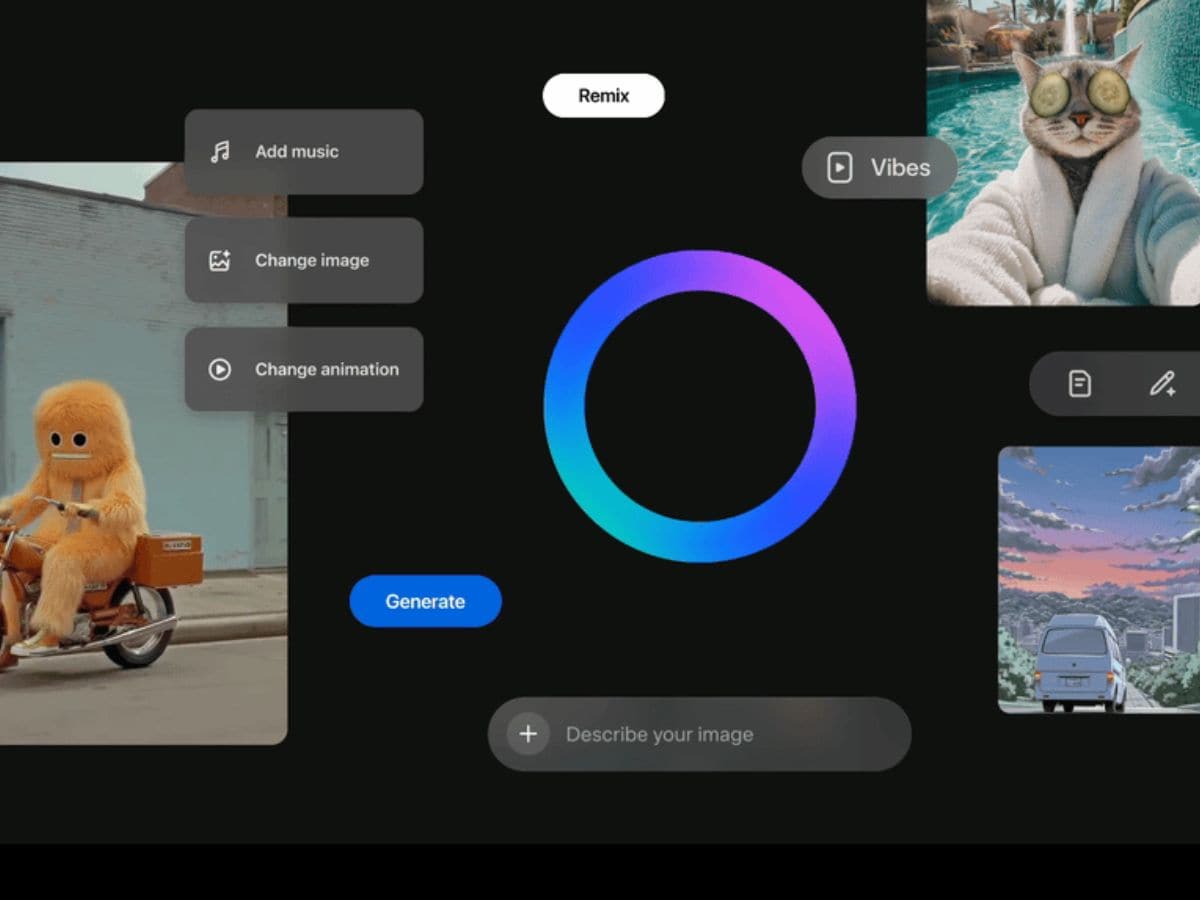En -hi, everyone, and welcome back to Fast company‘s Plugged in.
Our new print issue features “How YouTube ATE TV,” An Oral History of the video-sharing site’s impact on Entertainment, Culture, and Business as Told by Dozenses Past and Present. As we stitched sound bites together into a story, it is clear that our interviews had provided an embarrassment of riches. Indeed, we had too many great stories and insights to cram into one magazine article.
So we expanded the online version of the article into five Oral historys. Two are live on our site now, covering the company’s earliest days and acquisition by Google. Three more will roll out next week, brings the story up to 2025-and, in the case of ai’s sweping impact on the platform, beyond.
One of the Joys of Working on This Project with My College and Fellow Interviewers, María José Gutiérrez Chávez, Yasmin Gagne, Steven Melendez, and David Salazar, Was Haveing An Excuse to Think Back to VACSE to Think Back to VACU Web was like 20 years ago. It’s not just that youtube was brand new and rapidly became a Necessity of everyday life. At the time, the whole proposation of being able to easily watch videos on the internet at all was a novelty. The Technology that Made Its Its Like YouTube – Possible at all was macromedia’s flash.
By the time youtube came along, flash was more than a decade old. Initially Known as Futurewave Smartsketch, It Morphed from a Drawing App for Pen-Based Computers Into a Browser Plug-in that Allowed Websites is allowed websites to offer more motion and interactive five on its oven. Flash jazzed up the internet without required in the way of bandwidth or computing cycles-a critical virtue back in the days of pokey dial-up conferences. A Whole Universe of Flash-Enabled Animations and Games Sprung Up.
Flash was so manifestly useful that netscape and microsoft bundled it with their browsers. Eventually, the plug-in added support for video playback, dramatically simplifeing a process that had for formerly Required Clunky Software Such as Realplayer. INTEAD of Video Being Something You Watched In A SeParate App with Its Own Interface, It Could Be Rendered Right Inside Sites. That’s why youtube was so easy to use. It also permitted the fledgling site to make its videos embeddable on any web page, sporesing them all over the internet.
If you were online back then, you may recall all this. But i’m afraid flash’s reputation was tarnished by what happy
A couple of months after youtube was founded, adobe agreed to Acquire macromedia. Once Flash Came into its portfolio, the software giant aggressively stuffed the plug-in with new features. What Had Begun as a Complement to the Plain-Vanilla Web Became a Platform Unto Itself.
As Flash Got More Powerful, It Lost Its Original Spritely Nature. Increasingly, it was a bloated Resource Hog – Somenting You Reluctally Allowed In 2011, I Wrote About How Flash Had Mucked Up My MacBook Air, and how much better the laptop worked with the plug-in disabled. Did i mention that flash also had some pretty significant security issues?
By the time I Banished Flash from My Mac, The PC-CENTRIC Web that Had Given Us Flash in the first place was Receading Into History. Apple’s Introduction of the iPhone in 2007 and iPad in 2010 Had Put Browsers Onto New Classes of Gadgets with Smaller Displays and Touchscreen Interfaces. But apple didn’t give adobe the kind of technical access it needed to put flash on an iphone or ipad. On thats devices, flash content showed up as Empty Boxes.
In 2010, Steve Jobs Published an Open Letter, “Thoughts on Flash,” that argued that adobe’s software was rife with problems and apple’s platforms was platforms weed plate Adobe –nd a Fair Percentage of Technology EnthusIasts – SAW Apple’s exclusion of flash as being about locking out competition, not enhancing the user experience.
Now, Google’s Android Mobile Operating System single Run Flash. And for a time, makers of android devices considered that a Major Advantage. Blackberry, The Maker of the Playbook Tablet, even ran tv commercials trumpeting flash support as a defining feature.
The only problem was that mobile flash was awful. It taxed the devices of the period beyond their breaking point. Even if it has been more efficient, Much of the World’s Flash Content Simply Didn Bollywood Well on a Tiny Touchscreen.
In 2011, Adobe Gave up on Mobile Flash. Then a Suite of Open Web Technologies Known as HTML5 Largely replicated Flash’s features as part of Web Browsing’s Basic Functionality, No plug-in required. Many big sites started abandoning flash, period. Adobe decides to wind down the technology in 2017 and stopped supporting it altogeether in 2020.
I don’t miss flash in the sense of thinking of Even in the days when flash was quite pleasant, a single company bearing so much responsibility for how websites worked was never ideal. That became painted clea adobe lost track of the values that had made flash Popular in the first place. When it is finally dized, I was able to reallocate the brain cells I’d dedicated to wrestling with it to happy pursuits.
Nevertheles, it was nice to remmber the days when flash’s impact on the web was worker. As a Startup, YouTube Got a Lot of Things Rights, Such as see users as a community, not just a moorass of eyeballs. But none of that would have matters if the internet has still been stuck in the realplayer era.
As billy biggs, a software engineer who’s been at google and youtube since 2006, put it when I spoke with him for our for youtube history, “Flash video is what made this all poses3.” It was the right technology at the right time. That’s as much a part of its legacy as its later regrettable evolution and descent into obesolescence.
You’ve been reading Plugged in, fast company‘S Weekly Tech Newsletter from Me, Global Technology Editor Harry McCracken. If a friend or colleague forwarded this edition to you – or if you reading it on fastcompany.com – You can check out previous issues and sign up to get it yourSelf every friday. I love hearing from you: ping me at [email protected] with your feedback and ideas for future newsletters. I’m also on bluesky, mastodon, and threads, and you can follow Plugged in on Flipboard,
More Top Tech Stories from Fast Company
This interactive ai-generated podcast app from eX-googlers blew my mind
Huxe Makes Podcasts Almost Uncannily Personal –and even lets you talk to their ai hosts. Read more →
Inside Amazon’s ‘Iliad Flow,’ The Decept UX at the Center of Its Federal Trial
We unpack the ftc’s claims that amazon used design to trick customers into buying –nd keeping -a prime subscription. Read more →
A Facebook Dating App Hopes to be the Cure for ‘Swipe Fatigue’
The AI-Powered Bot Can even sugges pickup lines. Read more →
Ai Tools AREN’T Making Much of a Difference for Companies
Chat GPT, Copilot, and their competitors are boosting productivity with moving the needle on profit and loss. Read more →
5 Time-Saving Outlook Features You’re Probably overlooking
Once you know these gems, you can’t go back to not using them. Read more →
I Gave Chatgpt $ 500 of Real Money to Invest in Stocks. Its picks surprised me
I Told Chatgpt with GPT-5’s ‘Thinking’ model selected that I would give iT $ 500 to investment howyver it saw fit. Read more →
The application deadline for fast company’s most innovative companies is Friday, October 3, at 11:59 PM pt. Apply today.










